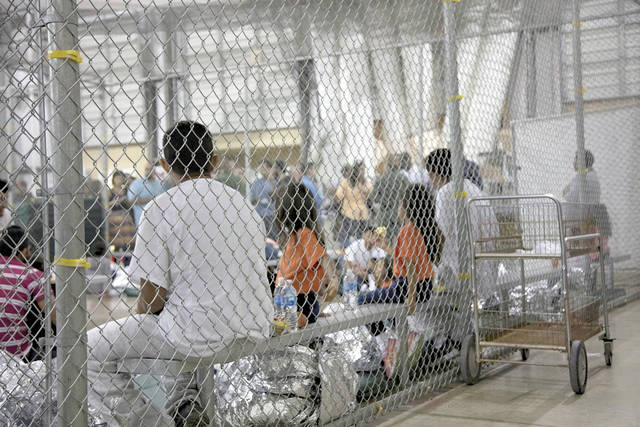More than 50 years ago, when I was a 14-month-old toddler, I was involuntarily separated from my parents. I was so young that I have no memories of those 11 days in a children’s hospital. Deep down, however, I carry the ineradicable sadness of that experience to this day.
The part of that small child still inside me wants to bear witness. Despite changes in White House policy, there are thousands of children separated from their immigrant parents — some under a year old at so-called tender age shelters — and no concrete plans for how they will be reunited. The trauma those children are suffering remains far from over.
I grew up in Sweden, and in the 1960s parents were forbidden from visiting children in the hospital. This was common medical practice in other countries, too, including England in the early 20th century. The dominant belief was that caring for a child’s physical needs was all that was necessary for a recovery. Medical staff were thus directed to ignore the emotional needs of children, not even to console them. Parents were instructed to stay away so as to not disrupt the care by upsetting children with heart-wrenching goodbyes; that would make the nurses’ jobs harder.
Despite the absence of concrete memories from my hospital stay, I do know the precise routines of my days there. Thanks to detailed records kept by the hospital staff that I later obtained, I know its grim rhythms. Among those records I discovered a “scream chart,” on which nurses recorded my crying and their routine administration of sleeping pills.
Worse is what is revealed in a neatly typed narrative. Upon intake, I was described as a “lively and active girl who can say just two words, mama and papa.” Eleven days later, I merited a description as a “markably reserved, distrustful, and anxious” patient. I also know from my mother that, after my return from the hospital, I suffered from acute separation anxiety and would break down whenever she was out of my sight. She still has nightmares about the whole thing.
This type of hospitalization ended in Sweden in the 1970s, when research overwhelmingly showed that separating children from loved ones was traumatizing and harmful to their mental well-being. By then, the attachment theory, which describes the instinctual way children bond with a caregiver and the developmental dangers of disrupting that bond, had been developed by the British child psychologist James Bowlby.
Wider public understanding of this issue came with the documentary films by James Robertson, a psychiatric nurse, who worked with Bowlby. Robertson, who had observed children in distress in hospitals in England, in 1952 created a short film titled “A Two-Year-Old Goes to Hospital” showing a girl in a hospital in England. The girl, initially reserved, breaks down crying, “I want my mother.” It is hard to watch — for the same reasons that this week’s news footage and recordings of crying children has torn at the conscience of so many people.
In this country, separating children from parents was a common practice of slaveholders. Starting in the 1870s, American Indian children were taken from their parents by the federal government and placed in boarding schools designed to sever all ties to their culture. The trauma these families suffered represents a dark, under-documented history. At just one, the Mount Pleasant Indian Industrial Boarding School in Michigan, which operated from 1893 to 1934, 227 children died while at the school. The cause of death is listed as unknown for many of them.
This week, U.S. Sen. Dianne Feinstein (D-Calif.) released figures from the Department of Homeland Security showing that 2,342 children were taken from their parents at the U.S.-Mexico border between May 5 and June 9. There are likely more than that; Trump’s “zero-tolerance” policy was announced April 6.
On a gut level, everyone knows this is wrong. Scientific evidence backs up that understanding: Thousands of mental health professionals sent the Trump administration a petition saying: “To pretend that separated children do not grow up with the shrapnel of this traumatic experience embedded in their minds is to disregard everything we know about child development, the brain and trauma.”
It is not the 1950s and ‘60s. We now know that separating children from parents causes irreparable damage and that the passage of time renders that trauma all the more severe. A moral urgency attends the task of reuniting detained children with their parents and ending this brazen and destructive assault on migrant families.
Margareta Larsson teaches English as a second language at Georgia State University in Atlanta.



